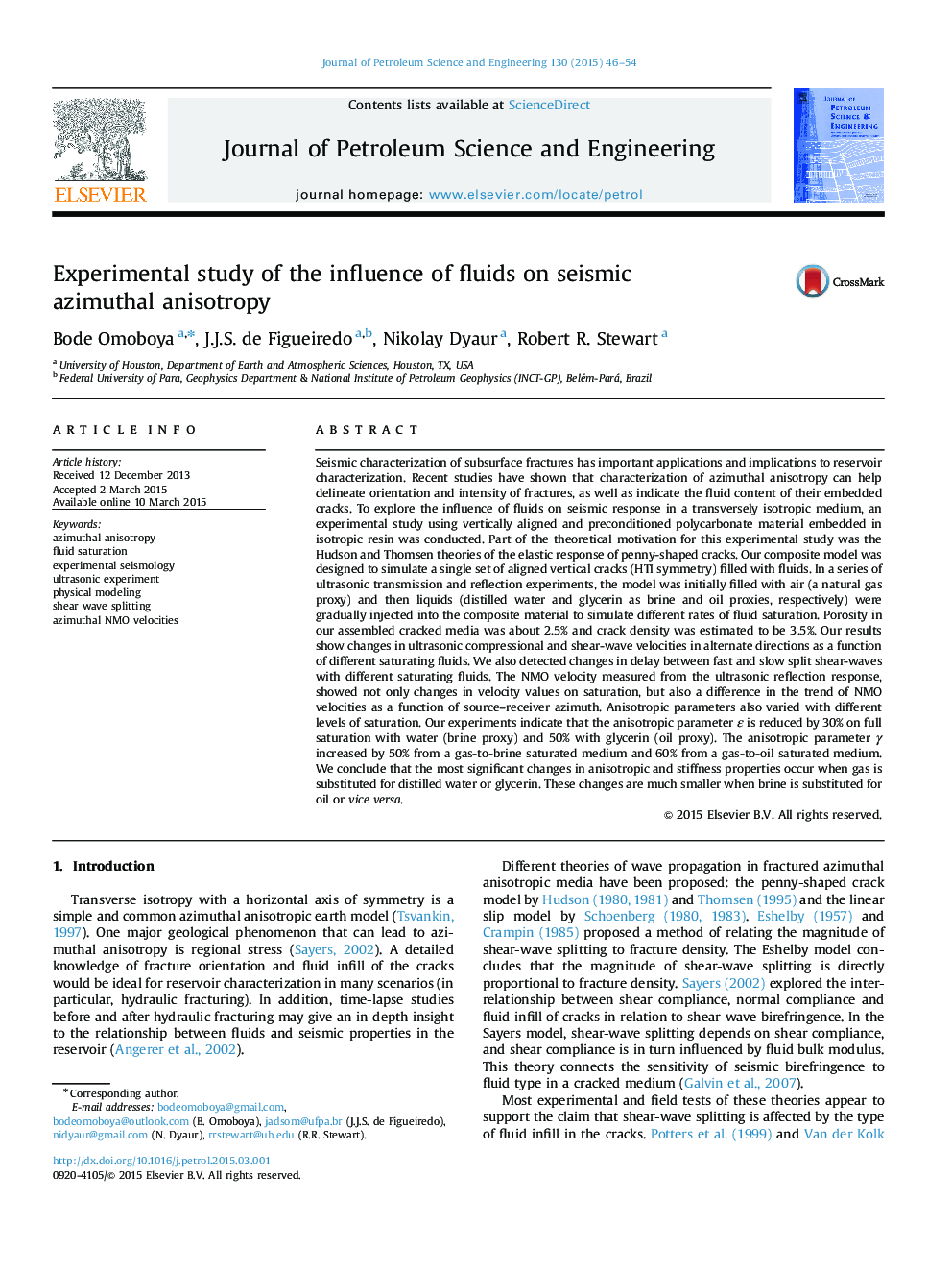| کد مقاله | کد نشریه | سال انتشار | مقاله انگلیسی | نسخه تمام متن |
|---|---|---|---|---|
| 1754980 | 1522811 | 2015 | 9 صفحه PDF | دانلود رایگان |
عنوان انگلیسی مقاله ISI
Experimental study of the influence of fluids on seismic azimuthal anisotropy
ترجمه فارسی عنوان
بررسی تجربی اثر مایع در مورد آنیزوتروپیک آزیموتال لرزه ای
دانلود مقاله + سفارش ترجمه
دانلود مقاله ISI انگلیسی
رایگان برای ایرانیان
کلمات کلیدی
موضوعات مرتبط
مهندسی و علوم پایه
علوم زمین و سیارات
زمین شناسی اقتصادی
چکیده انگلیسی
Seismic characterization of subsurface fractures has important applications and implications to reservoir characterization. Recent studies have shown that characterization of azimuthal anisotropy can help delineate orientation and intensity of fractures, as well as indicate the fluid content of their embedded cracks. To explore the influence of fluids on seismic response in a transversely isotropic medium, an experimental study using vertically aligned and preconditioned polycarbonate material embedded in isotropic resin was conducted. Part of the theoretical motivation for this experimental study was the Hudson and Thomsen theories of the elastic response of penny-shaped cracks. Our composite model was designed to simulate a single set of aligned vertical cracks (HTI symmetry) filled with fluids. In a series of ultrasonic transmission and reflection experiments, the model was initially filled with air (a natural gas proxy) and then liquids (distilled water and glycerin as brine and oil proxies, respectively) were gradually injected into the composite material to simulate different rates of fluid saturation. Porosity in our assembled cracked media was about 2.5% and crack density was estimated to be 3.5%. Our results show changes in ultrasonic compressional and shear-wave velocities in alternate directions as a function of different saturating fluids. We also detected changes in delay between fast and slow split shear-waves with different saturating fluids. The NMO velocity measured from the ultrasonic reflection response, showed not only changes in velocity values on saturation, but also a difference in the trend of NMO velocities as a function of source-receiver azimuth. Anisotropic parameters also varied with different levels of saturation. Our experiments indicate that the anisotropic parameter ε is reduced by 30% on full saturation with water (brine proxy) and 50% with glycerin (oil proxy). The anisotropic parameter γ increased by 50% from a gas-to-brine saturated medium and 60% from a gas-to-oil saturated medium. We conclude that the most significant changes in anisotropic and stiffness properties occur when gas is substituted for distilled water or glycerin. These changes are much smaller when brine is substituted for oil or vice versa.
ناشر
Database: Elsevier - ScienceDirect (ساینس دایرکت)
Journal: Journal of Petroleum Science and Engineering - Volume 130, June 2015, Pages 46-54
Journal: Journal of Petroleum Science and Engineering - Volume 130, June 2015, Pages 46-54
نویسندگان
Bode Omoboya, J.J.S. de Figueiredo, Nikolay Dyaur, Robert R. Stewart,
